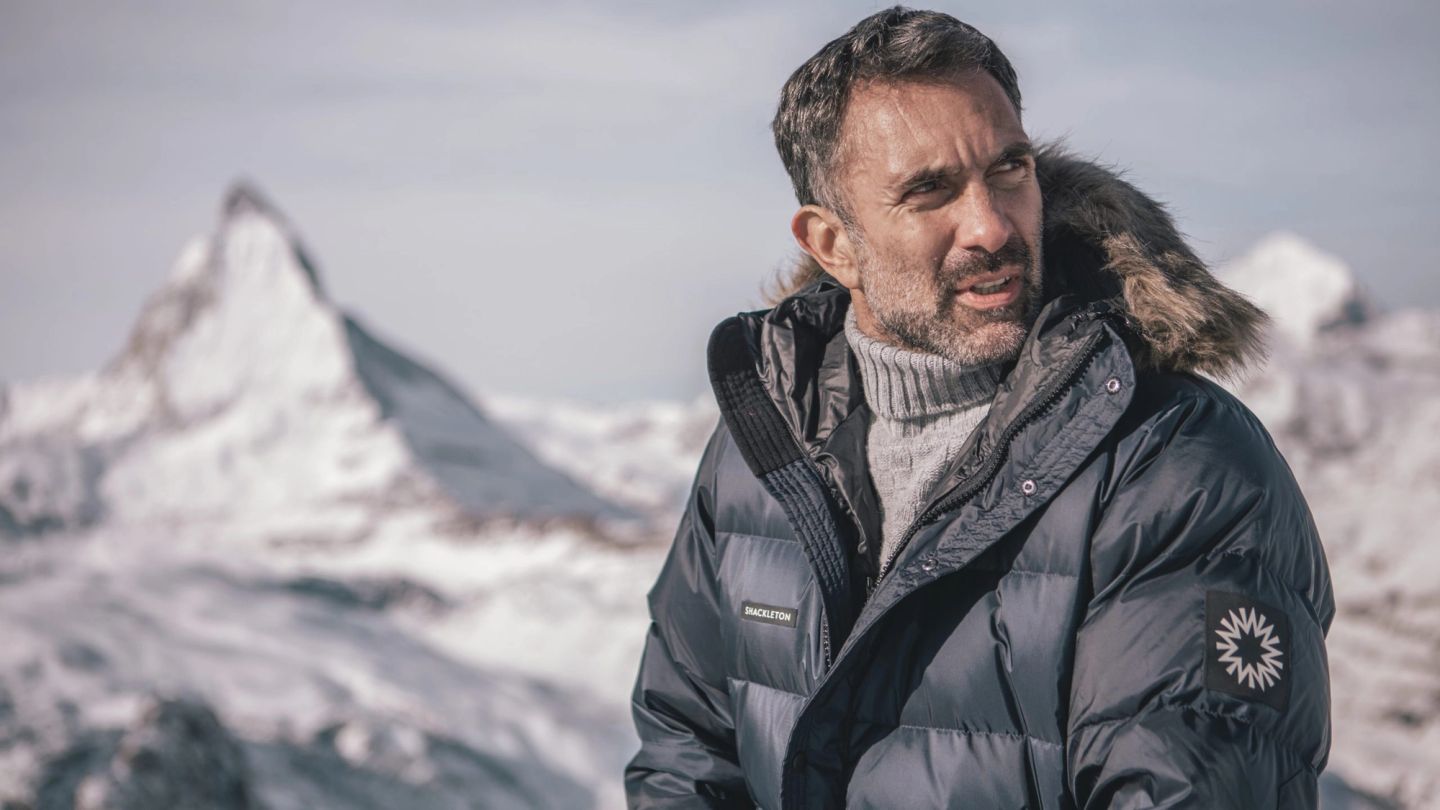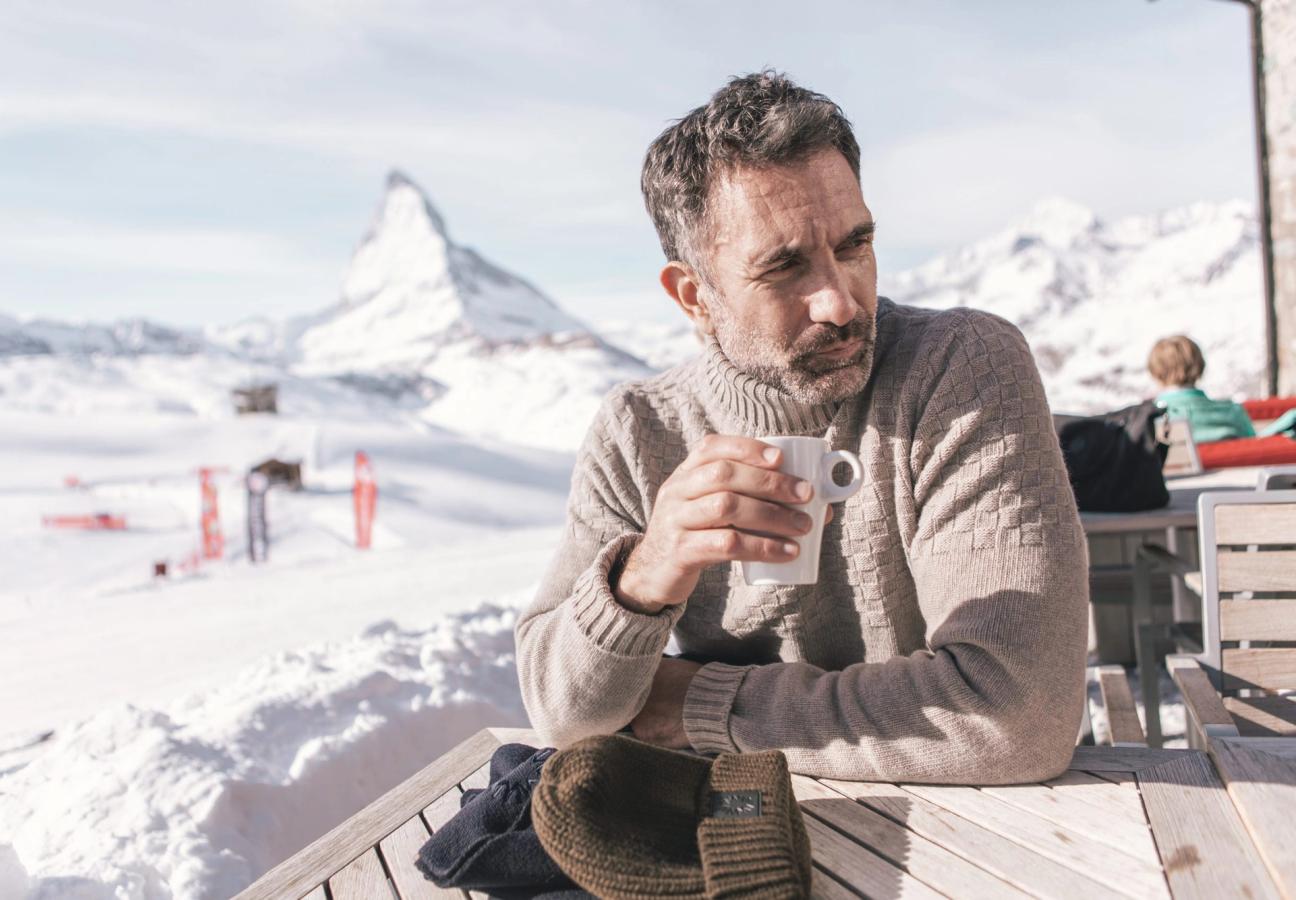

How Shackleton came in from the cold
Co-founder Martin Brooks explains how the British brand combined expedition-grade performance with the highest levels of craftsmanship and luxury
Words: Jonathan Wells
In 2016, when co-founder Martin Brooks launched Shackleton with Ian Holdcroft, he got the ultimate stamp of approval. The Hon. Alexandra Shackleton, the great polar explorer’s grand-daughter, supported the entrepreneurs’ endeavour. And so, when they set about creating extreme-weather performance apparel, they knew it had to stand up to even the most strenuous, sub-zero tests.
We spoke to Brooks about this journey: how Shackleton remains committed to extensive field-testing; how the brand has equipped a number of record-breaking polar explorers and scientists; and how it’s conquered the most daunting landscape of all — the modern luxury market.
Was the name always going to be Shackleton? They’re some big, fur-lined boots to fill — what was it like shouldering the responsibility of adopting such an iconic name?
In short, yes – because he is a legend of polar exploration; a man who believed in qualities of optimism, courage, idealism and patience. He was also an incredible leader, willing to sacrifice fame and success for the well-being of his crew. His legacy has stood the test of time and offers a hugely credible foundation on which to launch a modern performance-wear brand of equal values.
As you say, big shoes to fill, but that responsibility equates to a standard we must meet. And we don’t accept anything less than that standard: apparel that can out-perform anything else in its class, field-tested in the harshest places on earth, inspired by a man who pushed the boundaries of exploration and always sought the best clothing and gear for his crew.
How about the logo? It’s a simple — but striking — design. Is there an inside story there concerning Shackleton?
Yes. Shackleton’s gravestone in Grytviken Cemetery in South Georgia bears a nine-pointed star, roughly carved into local granite. During Sir Ernest’s last night on earth, he wrote in his diary: ‘In the darkening twilight, I saw a lone star hover, gem-like above the bay.’ It was this last vision and his superstitious attachment to the number nine that led his friends and shipmates to conceive the iconic shape that we have chosen to symbolise our mission.

So, the clothes themselves. How do they technically differ to the coats, knitwear and accessories Shackleton himself would have worn and relied upon?
Recent advances within textiles, yarns and recycled materials have allowed us to explore new realms of innovation that would have been out of the question a year ago — let alone a century ago. We are consistently among the first brands pioneering the use of innovative materials within performance-wear, something that can be seen in our recent range with graphene, the strongest, lightest, most conductive material ever discovered by scientists.
Saying that, we still develop pieces directly inspired by the pieces worn by Shackleton and his crew — particularly in our knitwear. Our Nimrod Sweater, for example, is inspired by the exact sweater worn by Ernest Shackleton during the 1907 Nimrod Expedition, only with a more refined finish. It is made in Italy from 30% cashmere and 70% lambswool, making it luxuriously soft, practical and durable. Our future is very exciting but, with a foundation built on the greatest explorer of all time, we always keep an eye on the past.
"We still develop pieces directly inspired by the pieces worn by Shackleton and his crew..."
The future is indeed exciting — you’ve recently been recognised as a Walpole 2020 Brand of Tomorrow. What role do you think your British-made ethos has had in your success?
Britain has a history rooted in exploration and discovery. Britain also has roots in traditional style and design, but the courage to push the boundaries. This means the best of both worlds: a strong heritage to lean on, but the ability to bend the rules; English craftsmanship, redefined, without ever compromising on quality. Being based in Britain, and being able to proudly say that all our apparel is designed in Britain, is a vital part to our ethos.
Saying that, while all of our products are designed in Britain, we do look at manufacturing opportunities around the world to make use of the most cutting-edge materials available. Some of our current knitwear pieces, for example, are designed in Italy.
You’ve made a point of taking your products to the far reaches of the earth — from the Arctic to the Antarctic. Why are you so committed to doing this, when most won’t ever make these journeys?
There’s no point in designing a jacket that looks great but performs poorly — there are enough of them on the market already. Our outerwear looks great, it’s comfortable, but it’s unapologetically function-led — and this can only be achieved by working with experts and by putting the pieces through their paces before production. A jacket that is designed to be worn in sub-zero temperatures cannot be conceived in the studio alone.
In the last two years, we’ve tested gear in Norway, Iceland and Antarctica. Just last week we were in Finse with some of the upcoming range, field-testing the gear in temperatures down to -22ºC. And, in 2019, polar explorer Louis Rudd MBE joined the Shackleton team, giving us an intimate insight into the most extreme environments on earth. This way, every detail is carefully considered: where pockets sit to improve blood circulation; how to make access easy with large gloves on, and much more.
What piece would you consider the cornerstone of the Shackleton range; the first piece of kit packed?
Each piece stands out in its own right, developed for a specific purpose, but the Endurance Parka is our signature design. This parka is already in its fourth generation and has always been made to a performance standard rather than a price point. It’s the real deal, chosen by experts, trusted by explorers. Each year it is upgraded to be the very best parka in its class, using the newest technologies and materials that make it extremely efficient and comfortable.
In addition to performance innovation, sustainability is of growing importance. There are fantastic natural properties that can be enhanced from sustainably-sourced fibres. It is also impossibly light because we use 100% pure goose down rather than a feather mix. The latest iteration also features a synthetic fur ruff as in 2018 we stopped using real fur — a decision we are committed to.
You mentioned that you have joined forces with other explorers to help refine your products? Have you embarked on any other partnerships?
We joined forces with camera powerhouse Leica last year to create the world’s first extreme weather photographer’s jacket, working closely with renowned expedition photographer Martin Hartley. The Frank Hurley has 17 bespoke features, and is a jacket designed for photographers, by photographers.
Want to see which brands made the cut for us? Here are Gentleman’s Journal’s 50 Best British Brands…
Join the Gentleman’s Journal Clubhouse here.


